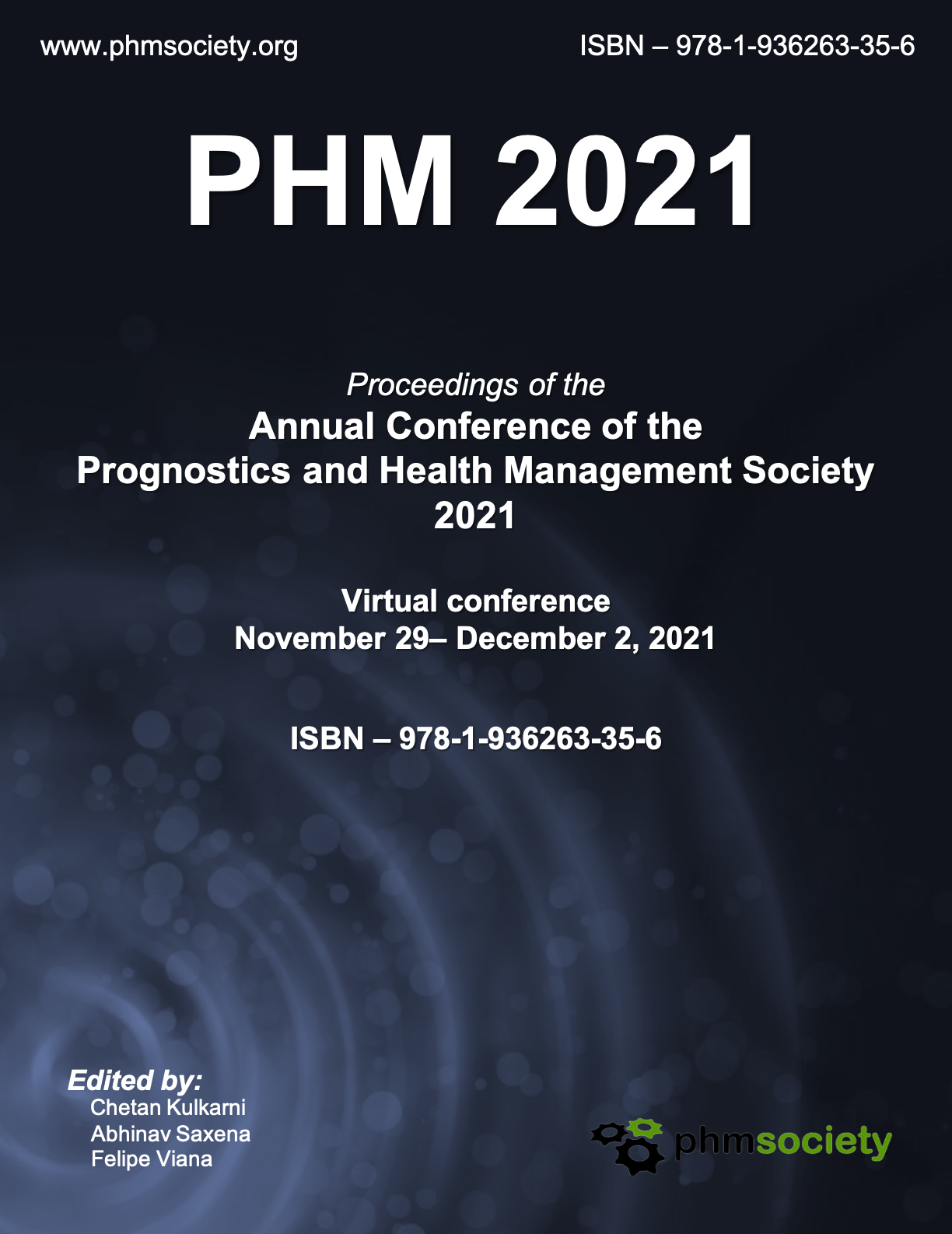Autoencoder Based Anomaly Detector for Gear Tooth Bending Fatigue Cracks
##plugins.themes.bootstrap3.article.main##
##plugins.themes.bootstrap3.article.sidebar##
Abstract
This article reports on anomaly detection performance of data-driven models based on a few selected autoencoder topologies and compares them to the performance of a set of popular classical vibration-based condition indicators. The evaluation of these models employed data that consisted of baseline gearbox runs and the associated runs with seeded bending cracks in the root of the gear teeth for eight different gear pairings. The analyses showed that the data-driven models, trained on a subset of baseline data, outperformed classical condition indicators as anomaly detectors and may show promise for damage assessment.
How to Cite
##plugins.themes.bootstrap3.article.details##
Autoencoders, Machine learning, Neural Networks, Gears, Gear crack, Anomaly detection, Condition indicators

This work is licensed under a Creative Commons Attribution 3.0 Unported License.
The Prognostic and Health Management Society advocates open-access to scientific data and uses a Creative Commons license for publishing and distributing any papers. A Creative Commons license does not relinquish the author’s copyright; rather it allows them to share some of their rights with any member of the public under certain conditions whilst enjoying full legal protection. By submitting an article to the International Conference of the Prognostics and Health Management Society, the authors agree to be bound by the associated terms and conditions including the following:
As the author, you retain the copyright to your Work. By submitting your Work, you are granting anybody the right to copy, distribute and transmit your Work and to adapt your Work with proper attribution under the terms of the Creative Commons Attribution 3.0 United States license. You assign rights to the Prognostics and Health Management Society to publish and disseminate your Work through electronic and print media if it is accepted for publication. A license note citing the Creative Commons Attribution 3.0 United States License as shown below needs to be placed in the footnote on the first page of the article.
First Author et al. This is an open-access article distributed under the terms of the Creative Commons Attribution 3.0 United States License, which permits unrestricted use, distribution, and reproduction in any medium, provided the original author and source are credited.
